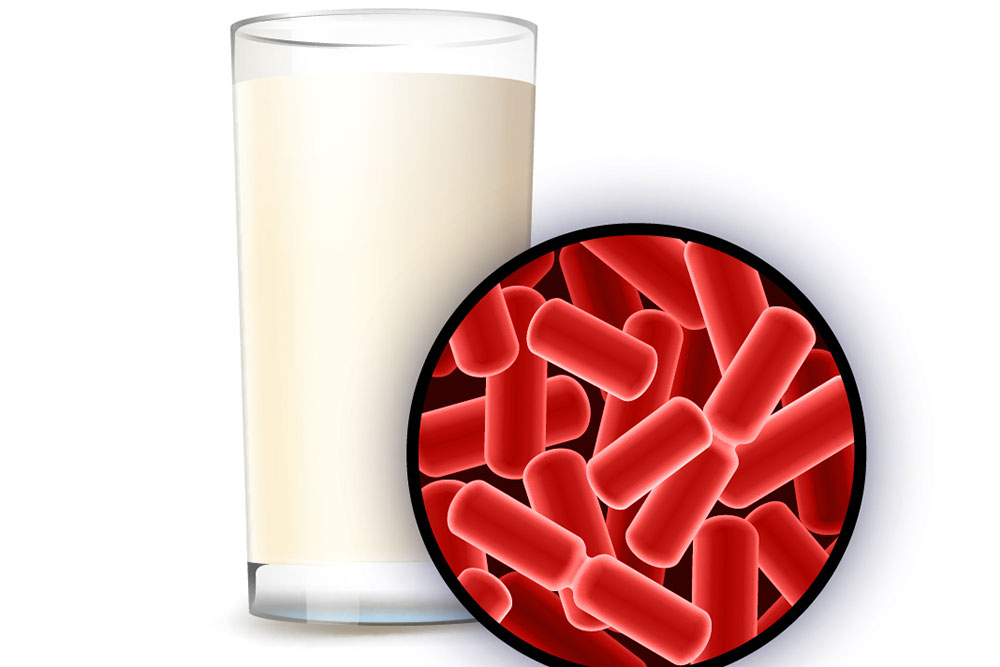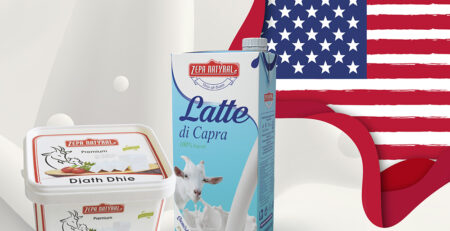Fresh pasteurized milk
The milk freshly milked from the cow is sterile, but it immediately comes into contact with the microorganisms present in the environment, with the tools used and with the animal itself, which may also contain pathogenic microorganisms. If it undergoes no treatment, the milk is defined as raw milk.
To make it safe for human consumption, milk must be refrigerated immediately after milking and must undergo a pasteurization process. It is definitely a necessary control treatment for the food safety of this delicate product, thanks to which any pathogenic bacteria present are eliminated.
Fresh pasteurized milk is a safe, complete and healthy food recommended for both children and adults.
Milk is an excellent ally of our well-being thanks to its complete nutritional profile characterized by a high protein content, but also by vitamins, phosphorus, carbohydrates and healthy fatty acids that give energy to our body. As it is a food product rich in minerals, especially calcium, the consumption of milk is necessary during growth as it contributes to the development of bones and teeth.
How does milk pasteurization work?
Let’s look at it below in detail
How is pasteurization done?
The pasteurization process, also called thermal rehabilitation, consists of subjecting the milk to a thermal treatment at a temperature of 71.7-78 ° C for 15-20 seconds. The time/temperature combination may vary according to the characteristics of the initial milk and must in any case ensure that the final product meets the requirements set by law. Bringing the milk to the indicated temperatures eliminates all germs and pathogenic bacteria present in the food and that could be a risk to human health. Some enzymes are also deactivated, which would lead to the degradation of milk fats, compromising its organoleptic characteristics.
Why should milk be pasteurized?
Milk is a delicate food that, if not heat-treated and refrigerated, will deteriorate within hours, becoming sour and curdled by bacteria that would transform its lactose into lactic acid. The pasteurization process extends the life of the milk and makes it absolutely safe to consume.
In fact, pasteurization has several advantages: on the one hand, it eliminates any pathogenic microbes and bacteria, on the other hand, it prevents these microorganisms from using the milk’s nutrients to reproduce, causing it to deteriorate quickly. At the same time, since it appears at a moderate temperature, it preserves the organoleptic characteristics and the right amount of whey proteins, keeping them undenatured.
Precisely because of the delicacy of the product, the milk found in supermarkets and stores is always subjected to some kind of thermal treatment, whether pasteurization, sterilization or Ultra High Temperature (UHT). The use of different thermal treatment methods allows obtaining safe products with different milk storage times that meet the different needs of consumers.
Differences between fresh, pasteurized and UHT milk
There are different types of fresh milk, depending on the level of skimming or the presence of lactose. Whole milk is the richest in fat: in it the percentage of fat is standardized around 3.6%; On the other hand, skimmed and partially skimmed milk undergo the skimming process, that is, the partial or total removal of fats, which in the finished product will have a percentage equal to 0% and 1.6%. The obtained milk will have a slightly different taste and will be a less caloric drink.
Fresh delactized milk, on the other hand, is milk that, during the pasteurization process, undergoes a treatment with the enzyme lactase, which reduces the amount of lactose below the values required by law.
We have seen how pasteurization works, which allows the elimination of various types of pathogenic microorganisms and the deactivation of certain enzymes, minimizing the loss of nutritional properties and organoleptic characteristics of milk.
Pasteurization was invented in the late 19th century by the chemist and microbiologist Louis Pasteur, allowing a major step forward for food safety. Only the most resistant spores and thermophilic microorganisms survive this treatment, generally not harmful to the body, which are absent only in sterilized milk.
Pasteurized milk should not be confused with sterilized milk, which undergoes a more invasive heat treatment aimed at destroying all microorganisms, pathogenic and not, to inactivate spores and native milk enzymes.
Sterilization is currently achieved with UHT technology which involves a thermal treatment at 135-150 °C for 4 seconds. The result is long-life sterilized milk.
We remind you that UHT milk has a shelf life of up to six months at room temperature. Thanks to the very short exposure to a high temperature, UHT milk still maintains optimal nutritional characteristics with a reduced impact on flavor and organoleptic characteristics.



